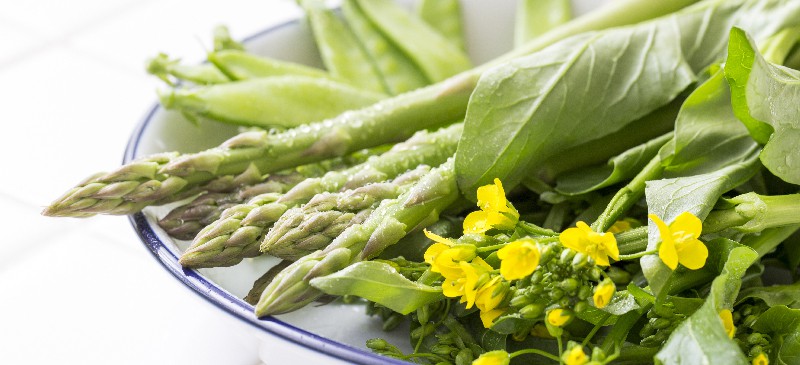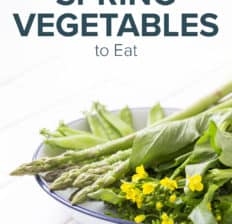This Dr. Axe content is medically reviewed or fact checked to ensure factually accurate information.
With strict editorial sourcing guidelines, we only link to academic research institutions, reputable media sites and, when research is available, medically peer-reviewed studies. Note that the numbers in parentheses (1, 2, etc.) are clickable links to these studies.
The information in our articles is NOT intended to replace a one-on-one relationship with a qualified health care professional and is not intended as medical advice.
This article is based on scientific evidence, written by experts and fact checked by our trained editorial staff. Note that the numbers in parentheses (1, 2, etc.) are clickable links to medically peer-reviewed studies.
Our team includes licensed nutritionists and dietitians, certified health education specialists, as well as certified strength and conditioning specialists, personal trainers and corrective exercise specialists. Our team aims to be not only thorough with its research, but also objective and unbiased.
The information in our articles is NOT intended to replace a one-on-one relationship with a qualified health care professional and is not intended as medical advice.
Top 10 Spring Vegetables: Nutrition, Benefits + How to Eat
March 18, 2023

Springtime is a symbol of new beginnings, a boost of activity within nature and an abundance of fresh produce after the hibernation of winter. We know that eating seasonally, when fruits and vegetables are at their freshest and available locally, is the healthiest and most sustainable way to fuel your body. Thankfully, there’s a long list of spring vegetables that become available at local farmers markets and grocery stores, including artichokes, fava beans and radishes.
Adding fresh spring veggies into your diet will not only boost your nutrient intake, but add texture and flavor to your everyday salads, sandwiches and entrees.
Top 10 Spring Vegetables
1. Artichokes
Artichoke season peaks in the spring and fall, and nearly 100 percent of this spring vegetable grows in the United States.
Artichokes have a unique nutty and slightly sweet flavor and can be steamed, boiled or roasted, and they come with a slew of health benefits, too. They are rich in antioxidants, boost heart health, and are a good source of fiber, folate, and vitamins C and K.
When selecting artichokes, opt for the heaviest and firmest, with a healthy green color and closed petals. Try adding them to salads, soups, pasta dishes, omelets and sauces.
2. Asparagus
Asparagus is a popular spring vegetable that contains virtually no fat while being very low in calories. It’s rich in fiber, vitamin K and vitamin A. Plus, asparagus has anti-inflammatory and antioxidant properties, and it serves as a natural diuretic that promotes detoxification.
When shopping for asparagus, test its freshness by making sure it would snap when bent.
You can roast, grill, bake or steam asparagus. It can also be eaten raw or pickled. Try this Garlic Asparagus Recipe as a side for entrees.
3. Green Peas
Fresh green peas are a quintessential spring vegetable. With a sweet and delicate flavor, they can be added to a long list of recipes.
Did you know that peas are a great source of plant-based protein? One cup contains almost nine grams of protein, making them a healthy food option. Peas are also high in fiber and vitamins A, C and K.
Peas can be eaten raw or cooked, and are great in salads, soups or as a side dish. You can also blend them to make drips or spreads that pair well with raw vegetables.
Try this Creamy Pea Salad Recipe or this Easy, Blended Pea Soup.
4. Radishes
Radishes are loved for their crunchy texture and spicy flavor, making them a great spring vegetable for salads and sandwiches. Radishes are low in calories and high in antioxidants. They also contain a good amount of fiber, which makes you feel fuller after meals and promotes digestive regularity.
You can eat radishes raw or even pickle them. Try this Zoodle Salad recipe that gets its crunch from radishes or this Mexican Chicken Pozole Verde recipe.
5. Rhubarb
Rhubarb has a sweet fruit-like flavor and is often used in fruity recipes like pies, but it’s actually one of the best spring vegetables because of its taste, vibrancy and versatility. Plus, rhubarb is a high-fiber food that eases digestive complaints, contains vitamin K that strengthens the bones and helps reduce inflammation.
Rhubarb can be roasted, stewed and baked. It’s typically combined with other sweet ingredients, like berries, to help balance out its flavor. You can also use it to make jam, salads, salsas and chutneys.
Try these health-packed rhubarb recipes.
6. Spinach
Spinach is a leafy green that is packed with vitamins and minerals, contributing to its many health benefits. It contains over 100 percent of your daily recommended intake of vitamin K, plus vitamin A, vitamin C, iron and folate.
Spinach contains powerful antioxidants, helps boost heart health and promotes a healthy immune system.
Spinach can be eaten raw in salads or cooked in a variety of dishes, such as pasta, quiches or casseroles. Try this Pear Salad recipe with sauteed spinach or this Crustless Spinach Quiche.
7. Watercress
Watercress is a peppery green that’s low in calories but high in vitamins A, C and K. It also contains omega-3 fatty acids, helps reduce inflammation and supports healthy skin. For centuries, watercress was considered a superfood.
Use watercress to add a zing of flavor to sandwiches or salads. It can also be pureed and added to soups. It’s spicier than spinach because of its mustard background and pairs well with melons, beets and nuts.
Try this Cucumber Watercress Salad to get started.
8. Carrots
Carrots are highly nutritious and cleansing because of their fiber content; plus, they are extremely high in vitamin A, which benefits immunity, eye health, reproduction, skin health and bone strength.
Although orange is their signature color, carrots come in a variety of colors and are among one of the most popular spring vegetables.
Carrots can be roasted, boiled, baked or eaten raw as a snack. They can also be juiced, candied and pickled. Try this Gluten-Free Carrot Cake recipe or this Raw Superfood Carrot Salad recipe.
9. Beets
Beets are a root vegetable that have a sweet and earthy flavor and pair well with other spring vegetables. They are high in antioxidants, vitamins A and C, and may enhance athletic performance and cognitive function. In ancient medicine, beets were used to improve heart weakness, liver toxicity, irritability and restlessness.
Beets can be roasted, boiled, or shredded and eaten raw in salads. They are also a great addition to smoothies, sandwiches, paninis and pasta dishes.
Some easy ways to prepare beets include this healthy Homemade Roasted Beet Hummus and this hearty Arugula Salad with pecorino and beets.
10. Fava Beans
These nutty-tasting beans are high in protein and fiber and also contain folate, manganese, copper and other important minerals. Fava beans help support healthy cardiovascular function, a strong immune system and healthy motor function. They can also provide energy.
Fava beans are a staple in Mediterranean cuisine and often steamed, boiled or mashed. To start cooking with fava beans, try this Asparagus and Fava Beans with Toasted Almonds recipe.
How to Add to Diet
There are many ways to add spring vegetables to your everyday diet. Here are a few ideas:
- Salads: Salads are an easy, healthy and delicious way to incorporate a variety of spring vegetables into your diet. Some spring veggies that work well in salads include asparagus, beets, radishes, peas and spinach.
- Stir-fries: Stir-frying is a quick way to prepare spring vegetables at home. Simply chop up your veggies, and stir-fry them in a little coconut or olive oil. Some of the tastiest spring vegetables for stir-fries include asparagus, carrots and fava beans.
- Roasted vegetables: Roasting is another easy way to prepare spring vegetables, especially as an addition to dinner entrees. Simply toss your veggies with a little olive oil, salt and pepper, and roast them in the oven until they are tender and caramelized. You can use asparagus, carrots and artichokes.
- Soups: Spring vegetables are great for making nutritious soups. Simply chop up your veggies, and simmer them in broth until they are tender. Then add some herbs or spices, like garlic, cumin, paprika and turmeric, for extra flavor. Spring vegetables that work well for soup include peas, spinach and watercress.
- Grilled vegetables: Grilling is a convenient way to add flavor to your spring vegetables. Simply brush your veggies with a little coconut or avocado oil, and grill them until they are tender and just slightly charred. Spring vegetables that work well for grilling include asparagus, artichoke and carrots.
- Crudités: When in doubt, make a crudité with chopped vegetables, like carrots, asparagus, artichoke and radishes. Pear them with crackers, fresh fruits and cheeses for entertaining.
Risks and Side Effects
Adding spring vegetables to your diet is a great way to boost your nutrient intake while eating seasonally. In most cases, it’s healthy and beneficial to eat these veggies, but there are some people who may have to limit or avoid some varieties due to the presence of carbohydrates and some minerals.
For example, people who are sensitive to FODMAPs (which includes asparagus, artichoke and peas) may need to limit the amount of veggies they consume. The same goes for people with kidney-related issues who need to watch their potassium intake from root vegetables.
Spring vegetables like beets are also a bit higher in carbohydrates and sugar compared to non-starchy veggies, so they may need to be eaten in only small amounts if someone is closely watching blood glucose levels.
Some people may have allergic reactions to certain spring vegetables, such as asparagus or artichokes. If you have a known allergy to a particular vegetable, avoid eating it or speak with a health care professional for guidance.
Conclusion
- When our ancestors foraged food sources, they were naturally eating a seasonal diet that was rich in fresh vegetables in the springtime.
- Eating fresh (and local, when possible) spring vegetables is a great way to eat a more nutrient-dense and sustainable diet.
- Some of the best spring vegetables to cook with include asparagus, artichokes, beets, spinach and peas.














